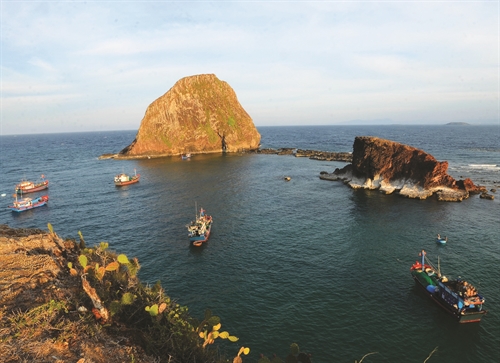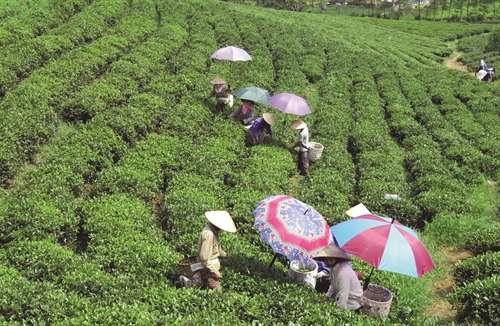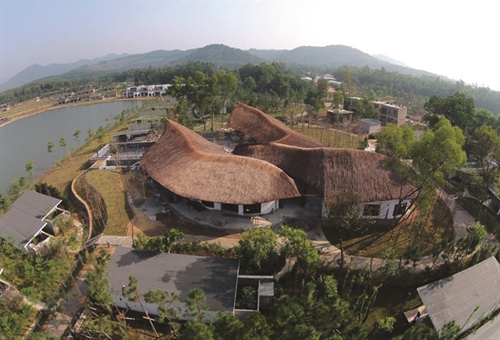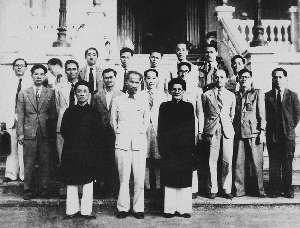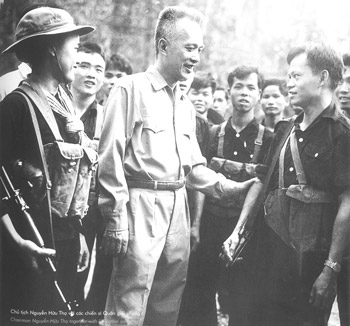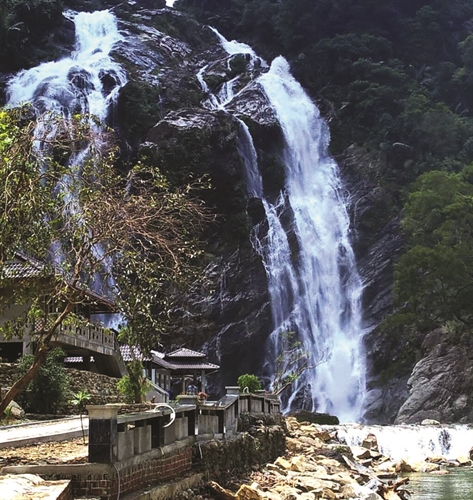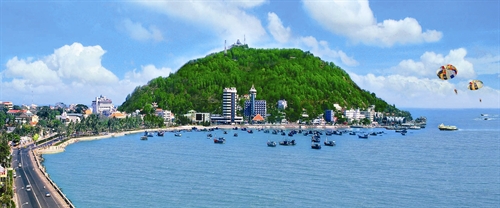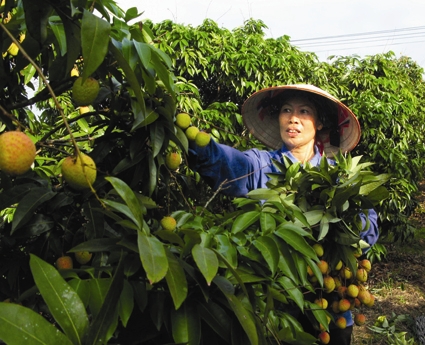Located 47 km to the southwest of Ho Chi Minh City, Long An province is the gateway to the Mekong River delta and one of the eight localities in the southern key economic region. The province borders Tay Ninh and Cambodia’s Svay Rieng province to the north with a borderline of 133 km, Ho Chi Minh City to the east, Tien Giang to the south and Dong Thap province to the west. Covering some 4,492 square kilometers, Long An has a population of 1.47 million (according to 2013’s statistics) and is home to 28 ethnic groups with Kinh (Viet) being the most populous, followed by Hoa, Khmer and Cham. The province is culturally diverse, populated with many followers of four religions, including Buddhism, Caodaism and Protestantism. Its major urban centers are Tan An city as its capital and Kien Tuong town, surrounded by 13 rural districts (Ben Luc, Can Duoc, Can Giuoc, Chau Thanh, Duc Hue, Moc Hoa, Tan Hung, Tan Thanh, Tan Tru, Thanh Hoa, Thu Thua, Vinh Hung and Duc Hoa).
FDI attraction
Long An is an agricultural province lying between Vam Co Dong and Vam Co Tay rivers with a dense network of canals and rivers. Its Binh Hiep border gate is connected to Cambodia’s Road 314 by National Highway 62 and its Can Duoc and Can Giuoc districts are linked with Ho Chi Minh City by National Highway 50. The province has the estuary of Soai Rap River flowing into the East Sea and a seaport system capable of accommodating vessels of a tonnage of up to 70,000 DWT.
In 2015, the province made the top ten in the Provincial Competitiveness Index (PCI) and was one of the provinces with the most foreign direct investment (FDI) capital.
According to Thai Van Thang, deputy head of the investment section of the Long An Planning and Investment Department, in August 2016, the province granted investment licenses to 13 new FDI projects totaling USD 31.8 million and permitted 45 existing projects to add USD 11.5 million to their registered investment capital.
As a result, the province has so far attracted 84 FDI projects totaling USD 537.6 million. The above projects specialized in footwear, textile and apparel, engineering and molding. China was the leading investor with 24 projects; followed by the Republic of Korea, 17 projects; Japan, six projects and Singapore, four projects while the USD 50 million project from Australia was the biggest.
At present, the province houses 768 FDI projects worth USD 5.1 billion and 28 industrial parks and 32 industrial clusters.
Thang said the province is expected to lure around USD 800 million this year.
Long An was calling for investment in urban development, transport infrastructure, wastewater treatment, solar power generation and horse-racing courses, Chairman of the provincial People’s Council Pham Van Ranh told the Hanwha group during his working visit to the Republic of Korea on September 20.
In order to attract more investors, in addition to the Government-provided preferential treatment, the provincial administration has offered them numerous incentives. Investment projects in geographical areas with socio-economic difficulties in Kien Tuong town and Tan Thanh and Duc Hoa districts will enjoy a corporate income tax rate of 17 percent for 10 years. In the meantime, projects investing in industrial parks in the locality are entitled to export duty exemption for two years and 50-percent duty reduction for subsequent four years. Those on the list of special investment priority sectors promulgated by Government Decree No. 118/2015/ND-CP will enjoy a 50-percent export duty reduction for nine years after being entitled to duty exemption for four years.
Investment attraction has a significant role in helping Long An complete its goal of becoming an industrialized province by 2020.
According to Chairman of the provincial People’s Committee Tran Van Can, in the coming time, the province will focus on reforming administrative procedures for land, housing, business registration and registration for grant of investment certificates. It will also adopt solutions to maintain its PCI ranking with a view to creating a fair competitive environment for investment, production and business activities of enterprises of all economic sectors. In addition, the provincial Planning and Investment Department will act as a focal point to improve the receipt and management of projects funded by non-state capital and located outside its industrial parks.
Apart from improving its transport, power, water and communications infrastructure facilities, Long An authorities will regularly work with investors and enterprises to address difficulties and remove hindrances in ground clearance as well as in business and production activities.
The province pledged to create the most favorable conditions for investors to explore investment opportunities in the province and implement investment projects, said Can, saying that “we see difficulties of enterprises and investors as ours and your successes as ours”.
In particular, the province has started the construction of the Public Administration Center and launched the website at www.skhdt.longan.gov.vn to support its citizens and enterprises.
The province plans to organize an investment promotion conference in mid-October.
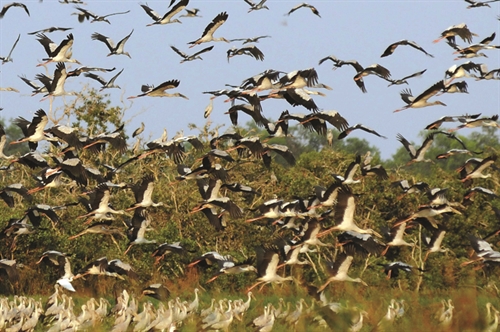 |
| Thousands of migrant birds seen at Lang Sen wetland reserve in Tan Hung district, Long An province __Photo: An Hieu/VNA |
Untapped tourism potential
Famous for its unspoiled landscape and intangible cultural heritage of humanity “don ca tai tu” (a genre of instrumental and vocal traditional music in southern Vienam), Long An province is also home to ancient Oc Eo culture, which formed and developed in the Mekong River delta from the first to sixth century, with about 20 prehistoric sites and nearly 100 Oc Eo cultural sites excavated and 12,000 individual artifacts found.
The province boasts 17 national and 72 provincial historical and cultural sites including the Binh Ta relics in Duc Hoa district, the tomb and temple of Nguyen Huynh Duc, a founder of the Nguyen dynasty, the Rach Cat military post and the hundred-column house. It has famous traditional craft villages, such as the Binh An drum-making village in Tan Tru district, the mat-weaving villages in Tan Tru and Can Duoc districts and the Can Duoc boat-making village. It is an ideal place for visitors to explore the nature and relax and ease the daily-life stress.
According to Le Phu Dung, head of the tourism section of the Culture, Sports and Tourism Department, the province welcomed 7,600 foreign holiday makers, mainly from Cambodia, Malaysia, Indonesia, Thailand and the US, and earned VND 270 billion in the first eight months of the year.
In the review period, international tourists came to Long An mainly from Ho Chi Minh City by air or sea. However, the number of foreign tourists traveling to the province through the border gate between Vietnam and Cambodia remained modest due to security problems and cumbersome visa procedures.
The achievements were attributed to local authorities’ efforts to preserve and uphold the value of cultural relics and natural ecological features and call for investment in charming Tan Lap floating village in Moc Hoa district, Vam Nhut Tao historical relic and other tourism sites, said Dung.
At present, the province has 291 hotels and guest houses and is calling for foreign investment in the USD 2 billion Happyland Entertainment Complex project in Thanh Duc commune, Ben Luc district.
The province plans to receive 923,000 tourists, including 13,000 foreigners, and earn a gross revenue of some VND 437 billion this year.
Long An is striving to turn the local hospitality sector into an important economic sector by 2020. The province is expected to become a leading satellite tourism destination in the Mekong River delta with typical image of Vam Co River on Dong Thap Muoi (Plain of Reeds) ecological landscape and Happyland entertainment paradise. By 2020, it will welcome 45,000 foreign tourists, mainly from the ASEAN nations, Western Europe, Australia, Northern America, Japan and the Republic of Korea, and earn a turnover of USD 100 million.
The sector will focus on developing typical tourist products such as the Vam Co river waterway tour, Dong Thap Muoi ecological tour and the Happyland entertainment tour; major tourist products including weekend relaxation and rural tour, and cultural and revolutionary historical relic tour as well as ecological tours during the flood season will also be provided.- (VLLF)
